When it comes to alien invasion films Hollywood has a few good examples under their belt, with George Pal’s adaptation of War of the Worlds and Ray Harryhausen’s Earth vs. the Flying Saucers being particularly good entries, but in 1961 moviegoers were treated to a science fiction adventure film from Italy, one where mankind would not be forced to fight the alien invaders on their own turf but up there in the stars.
Science fiction films that center on outer space adventures have always been a mixed bag as they range from lavish productions like Forbidden Planet to insanely low-budget offerings such as the laughably bad Fire Maidens of Outer Space, and while Antonio Margheriti’s Battle of the Worlds definitely skews towards the latter it was also produced for the same amount of money that a larger Hollywood film would normally spend on catering. There is at least a modicum of effort put into the creation of a future where space exploration has taken several leaps forward and for that, the filmmakers deserve some praise. The plot of this film is nothing special, typical science fiction nonsense about a rogue planet being discovered by an observatory, which the eccentric Professor Benson (Claude Rains) calls “The Outsider,” and the dealings with its apparent collision course with the Earth. Benson is your typical eccentric scientist, one of the types who will go off on some wild scientific tangents at the drop of a hat, but he is the one that has figured out that “The Outsider” is not going to hit the Earth but simply make a close pass.
Why Benson works out of a greenhouse is never explained.
Needless to say, the rest of the scientific community is less inclined to put their faith in the ravings of a man who works out his calculations on the side of clay flowerpots, of course, he turns out to be right, well, he’s sort of right. The rogue celestial does not, in fact, collide with the Earth but it doesn’t pass by, instead, it takes up an orbit 95 miles above our blue-green home. Benson concludes that “The Outsider” must be controlled by an alien intelligence so he calls upon the world's scientific governing council to destroy it without delay, but as he is this film’s Don Quixote he is ignored. This sets into motion a series of arguments and “action” moments with fellow astronomer Dr. Fred Steele (Umberto Orsini), who is dating Benson’s secretary Eve Barnett (Maya Brent) being forced to team up with Mars base Commander Robert Cole (Bill Carter) and his wife Cathy (Jacqueline Derval) as well as the observatory’s resident psychic Mrs. Collins (Carol Danell), not to mention a half-dozen or so talking heads who represent the Earth’s illustrious ruling bodies, but when an exploratory mission to “The Outsider” results in a number of flying saucers to emerge from beneath the planet's surface, destroying the Earth vessels, our heroes know they are in trouble.
That this space battle is less than awe-inspiring goes without saying.
What follows is a lot of silliness punctuated by philosophical debates that lead to Benson demanding complete and utter control of the world’s forces so as to deal with the threat, and while he is once again ignored he is able to gain some pollical clout when he discovers the musical language of the aliens and is able to use this to order the flying saucers to self-destruct. While the world leaders still ignore the advice of Benson, who wants to learn the secrets of this alien race, this conflict does lead us to the film’s most interesting element, a visit inside the world of “The Outsider” as our team of misfits venture across space and into the bowels of an alien planet, and it's here where we get the startling revelation that the alien race inhabiting this roaming planet has been dead for some time, that the flying saucers were part of an automated system that the long-dead alien race put in place to help them find a new world in which to live.
“I bet these aliens didn’t even leave a forwarding address.”
Stray Observations:
• Having recently played the grumpy Professor Challenger in the 1960 version of The Lost World the producers of this film thought he’d be perfect to play the part of the equally grumpy Professor Benson, and they were right as his character is what breathes little life is to be found in what is an overall dull affair.
• The 1951 classic When Worlds Collide dealt with a planet hurtling on a collision course with a doomed Earth, in the case of this film it would have been better off if Earth had been destroyed as humanity in this setting doesn’t look worth saving.
• The 1955 film King Dinosaur also dealt with a rogue planet entering our solar system but where that planet was full of dinosaurs the one in this film just had a bunch of pesky aliens.
• Professor Benson was aware of “The Outsider” for five days but didn’t tell anyone because he wanted to wait to see how long it would take his idiot staff to discover it, this I find to be a rather lackadaisical and dangerous attitude towards science and Earth’s protection.
• Steele is concerned that the rogue planet is too big to burn up in the Earth’s atmosphere which left wondering “What kind of planet would be small enough to burn up in our atmosphere?” I doubt anyone involved here made it through a grade-six science class.
• The scientific community ignores Benson’s calls to destroy “The Outsider” when it takes up orbit around the Earth, deeming this act too dangerous, but what about the cataclysmic new gravitational forces that a planet-sized body orbiting Earth would create? Eventually, the phantom planet begins spiralling inward toward the Earth, creating hurricanes and storms, but our planet would have been doomed long before that.
• Benson discovers a way to defeat the invaders by using a sound frequency that can disrupt their computer-controlled ships, which is a little too close to how the alien ships were destroyed in the film Earth vs. the Flying Saucers.
• The original Italian title was “The Planet of Extinct Men” which pretty much gives away the film’s startling third-act revelation.
“I defy the need for spoiler warnings!”
The only real reason to watch Battle of the Worlds is to experience the wonderfully over-the-top and pure bombastic performance by Claude Rains whose exorbitant take on a man “obsessed with the truth” overshadows the film’s cheap sets and overwrought melodrama and is what brings the entire proceedings up to the level of it being almost a science fiction opera. What is disappointing, aside from rather cheap-looking sets and too many scenes of people nattering as if we’ve walked into a movie that is ”already in progress” is that fact you’d think a production based in Italy would have some sense of fashion but the women in this movie dress in outfits that look like a cross between garbage bags and the lead apron you wear at the dentist.
“Professor, I’m turning myself over to the Fashion Police.”
Now, it’s hard to criticize the acting in a film where most of it is dubbed by other actors, Claude Rains is the one actor who spared this, but even by the standards found in a Toho Godzilla film the acting here is godawful and I swear someone must have either handed the voice-actors pages without any direction at all, or they were told to deliver each line as flat as possible. That is not to say that there aren’t praiseworthy elements in Battle of the Worlds, as mentioned Claude Rains gives a very enjoyable turn as a crotchety scientist and the atonal score by composer Mario Migliardi is quite good, and while the sets and costumes are threadbare and cheesy Antonio Margheriti’s direction and Marcello Masciocchi excellent cinematography work to instill some sense of futuristic wonder to this story, how far they succeeded is up to you the viewer to decide.
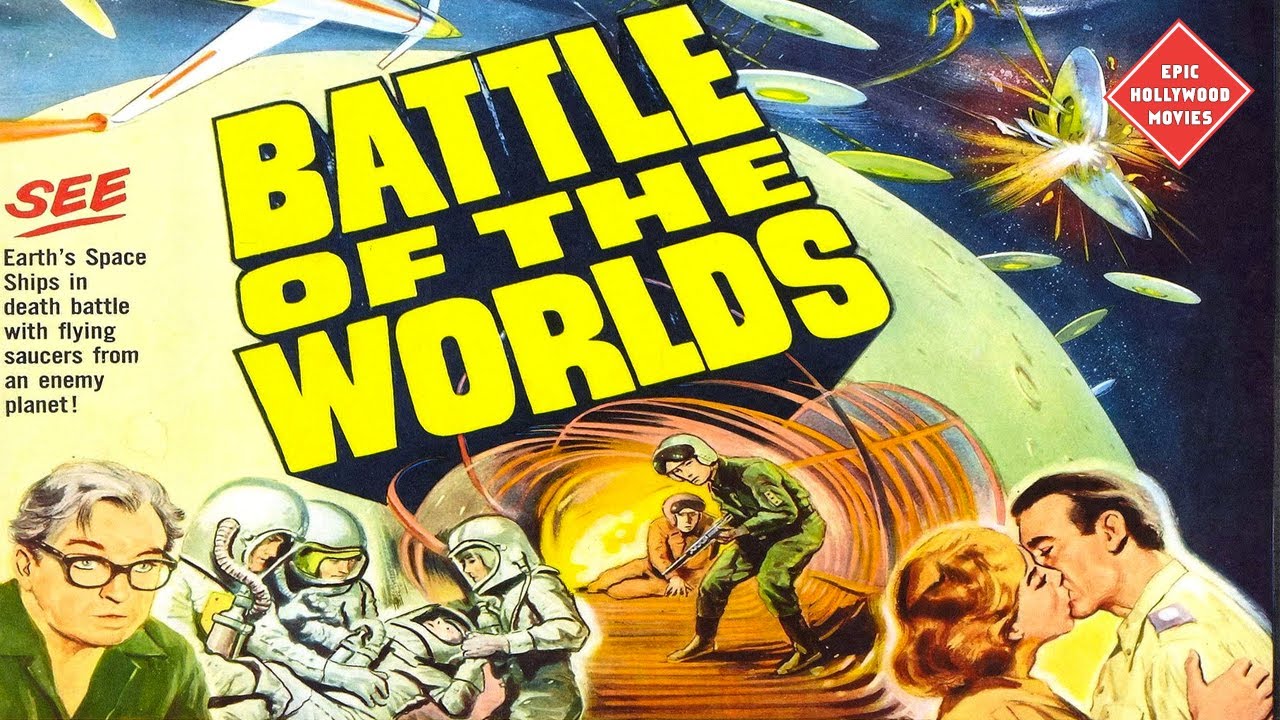
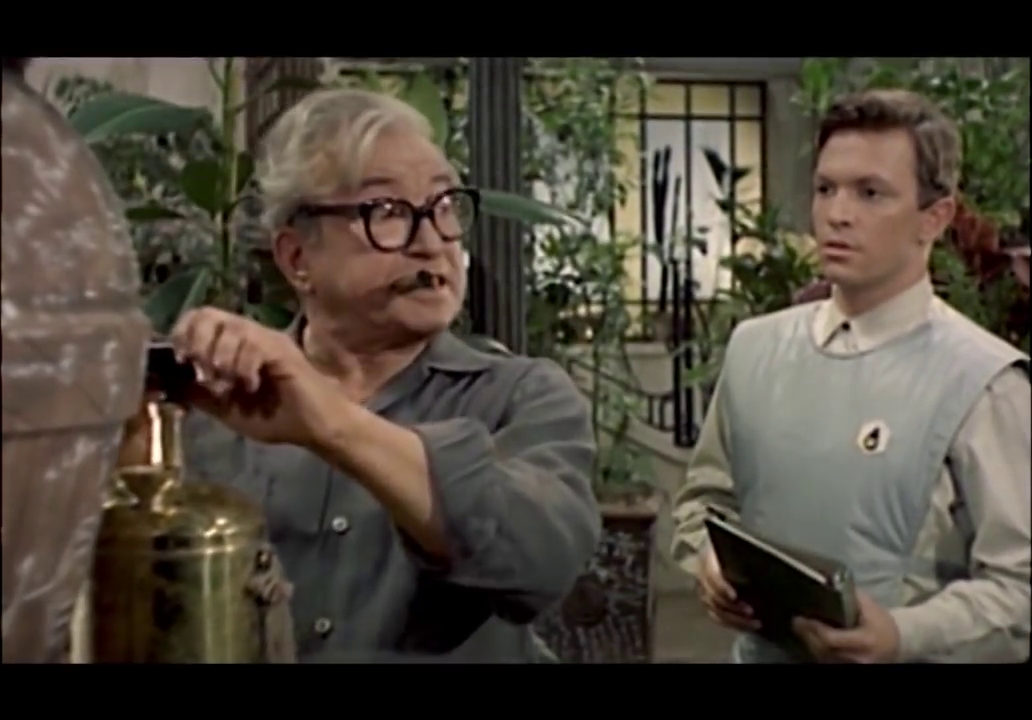
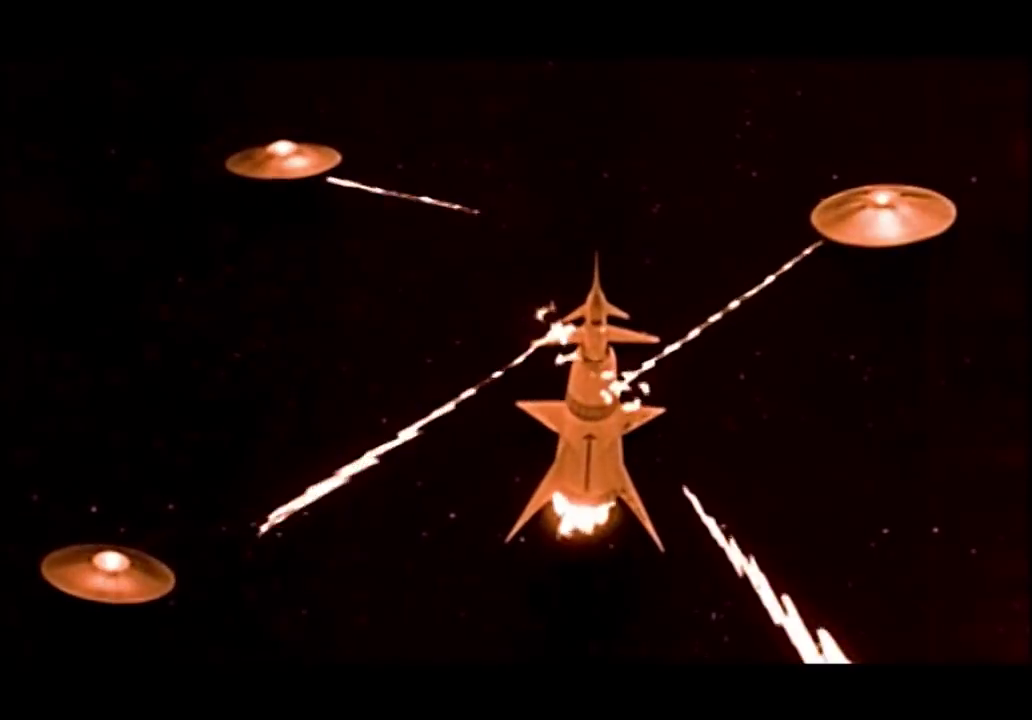
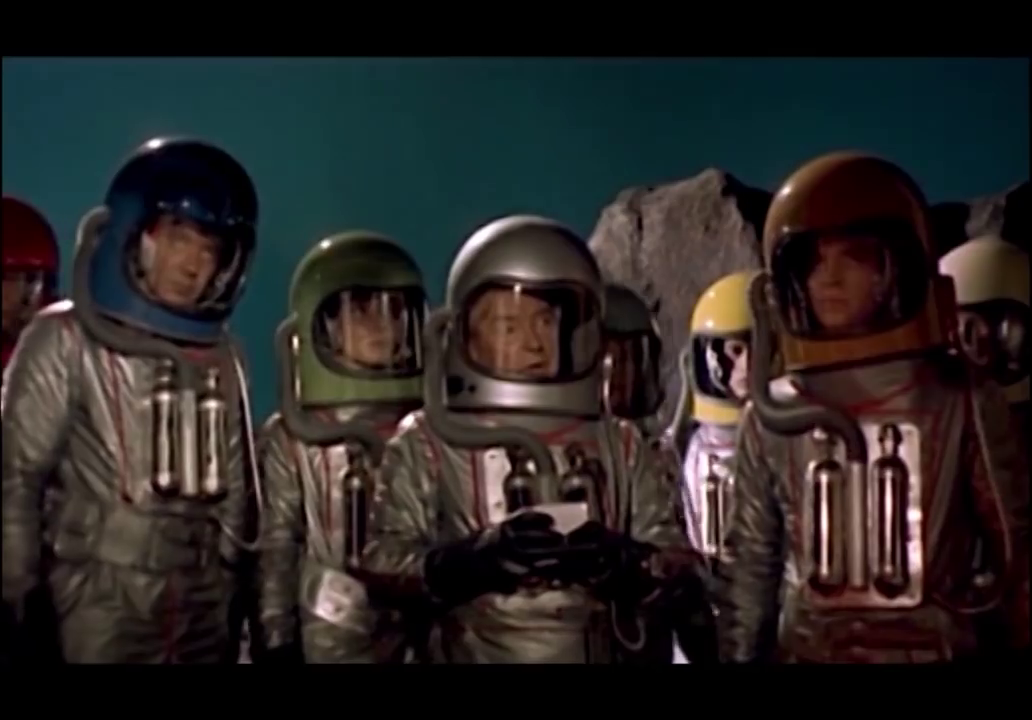
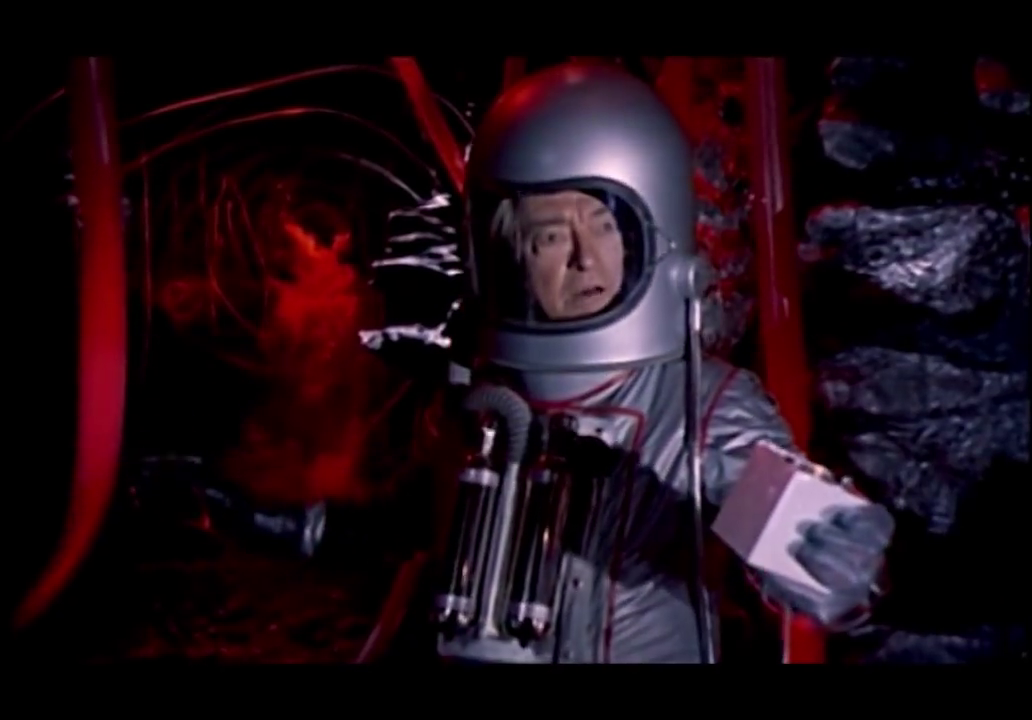
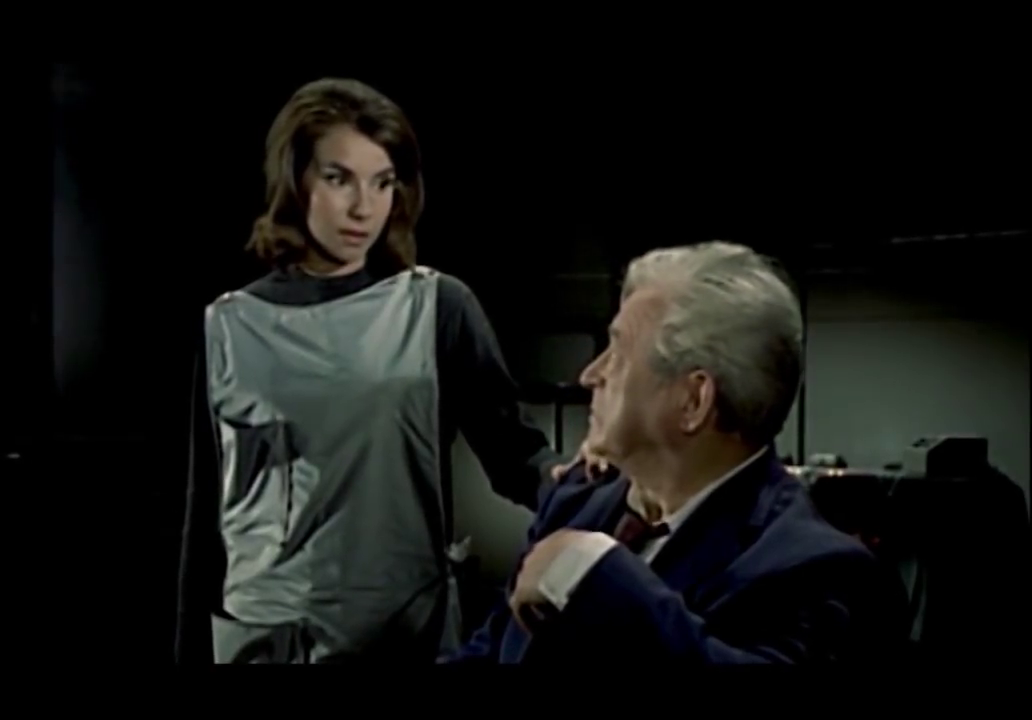

No comments:
Post a Comment